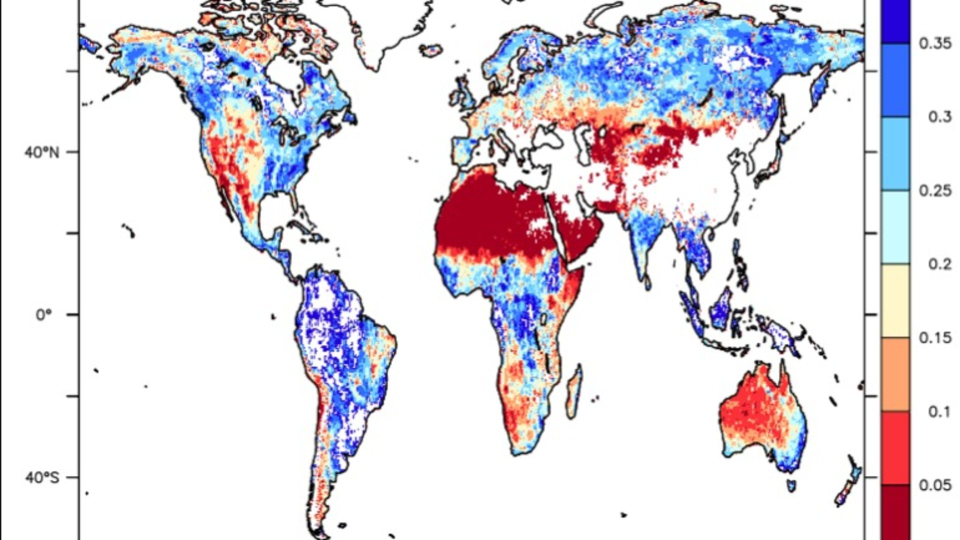Published on 18 June 2019
Since its launch in 2009, ESA's Soil Moisture and Ocean Salinity (SMOS) mission has been providing global observations of emissions from Earth's surface, particularly soil moisture and ocean salinity—two important variables in the water cycle.

Mean soil moisture distribution for June, July and August 2017. The mean was computed from swath-based soil-moisture generated by the ‘neural network’ in Near-Real-Time at ECMWF.
Accurate weather forecasts are paramount for both commercial and leisure activities. The European Centre for Medium-Range Weather Forecasts (ECMWF) is the leading agency to provide global accurate weather forecasts. Its Integrated Forecasting System (IFS), a gigantic numerical weather prediction model, provides weather predictions 24 hours a day, seven days a week.
Patricia de Rosnay, the Coupled Assimilation team leader at ECMWF comments that, “When using SMOS measurements in our operational forecasting system, we get a better description of the spatial distribution of the water in the soil.
“These are important measurements to understand the complex interactions between the land surface and the atmosphere, which is crucial for our forecasting system.”
The weather is a complex process and a good prediction largely depends on the knowledge of Earth's atmosphere provided through a variety of observations from satellites, in situ data, balloons, buoys and other observing systems.
These data need to be available fast in order to be beneficial for predictions. Producing geophysical soil-moisture measurements takes around eight hours after sensing.